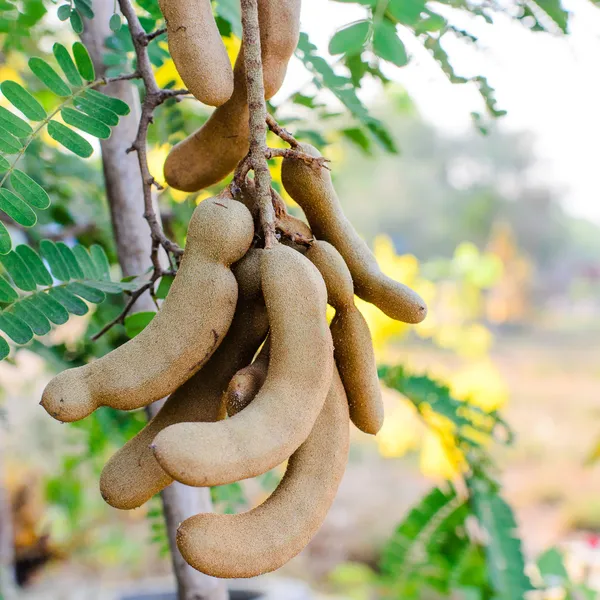Tamarind Tree

In Religion and Mythology
The Imli-tala at Vrindavan
There are many references to the tamarind tree in Hindu mythology. Some legends connect the tree to Usha, the daughter of Goddess Parvati. In South India, the tree is associated with night spirits and is generally grown in the precincts of the temples dedicated to the Devi, who is believed to battle the evil spirits during night.
The tree is associated with Lord Krishna in the northern parts of the country. ‘Imli-tala’ is a sacred tamarind tree located in Vrindavan, Uttar Pradesh. It is believed to date back to Lord Krishna’s time. Legend has it that the tree was cursed by Radhrani. One day when she was walking to meet Krishna, she stepped on the thick bark of a ripe tamarind fruit and it cut her foot. This made her late for her meeting with Lord Krishna. She therefore cursed the tree that its fruits would never ripen. Even today, the fruits of this tree fall down before getting fully ripened. The 15th century saint Sri Chaitanya Mahaprabhu would also sit under the Imli-tala and meditate upon Lord Krishna. Legends also associate the tree with Lord Rama. It is believed that the tamarind leaf was split by an arrow shot by Lakshmana, brother of Lord Rama.
The tree is best known for its fruits. The brown, sticky and tangy pulp is used in a variety of delicacies. The ripe fruit, leaves, roots and seeds are well recognized for their medicinal properties. The fruit is said to cure fever and also been used as a mild laxative. The seeds have been traditionally used to cure diabetes and intestinal ailments



Botanical Name: Tamarindus indica Linn.
Common Name: Tamarind tree, Imli (Hindi), Pulee (Tamil), Tintrini (Sanskrit)
Distribution: Throughout India, particularly in the South